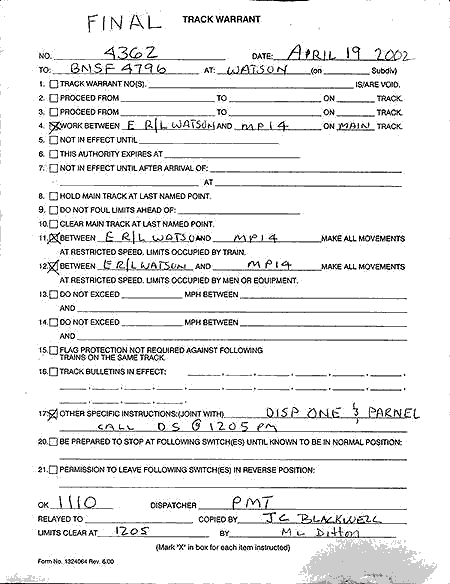|
Track Warrant Control During the later years of through operation, train movements on the Harbor Subdivision were by Track Warrant Control. Train crews that traveled over or worked within the district received authority from the Harbor Subdivision Dispatcher in the form of Track Warrants. A Track Warrant is a standard form that allows the dispatcher to give clear direction to each train crew. Typically, the dispatcher gave his instructions for filling out a Track Warrant Form over the radio. The crew member that copied the instructions onto a blank form was required to read back the instructions copied onto the completed form. If the read-back was correct, the dispatcher would give his approval by time and initials.
For the rail fan, Track Warrant Control is a real boon, since all instructions from the dispatcher to the crews can be easily monitored by listening to the dispatcher's radio frequency. You don't have to monitor the frequency very long before you can form a fairly accurate picture of what trains are on the line and where they are located. This makes anticipating when a train will arrive at a good photo location possible, which greatly aids getting good pictures of trains working the district. |
Next: End of Through Operations
This web page and all contents (c)2002-2005 LunarLight Photography,
All Rights Reserved.
Contact LunarLight Photography
Update December 28, 2004
